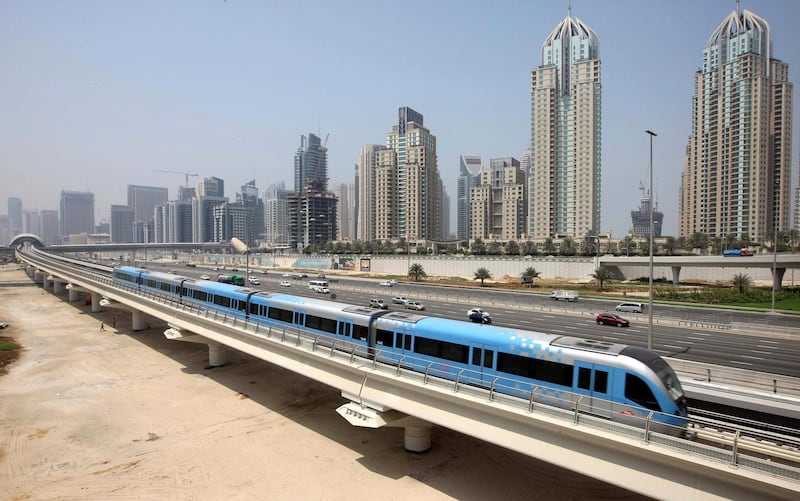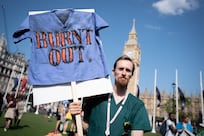Exactly a decade ago, when the first Dubai Metro train rolled out of Nakheel Harbour and Tower station, bound for Rashidiya at the end of the Red Line, few of us knew what to make of the astonishing new addition to the city skyline.
For doomsayers, it was little more than an expensive fairground ride for tourists. Few people – including members of Dubai’s Executive Council, as Sheikh Mohammed bin Rashid, Vice President and Ruler of Dubai, revealed on Twitter this week – could imagine anyone in the car-loving UAE abandoning the convenient privacy and comfort of their vehicles to ride alongside strangers on a train.
How wrong they were. In the past decade, the metro has carried more than 1.5 billion passengers. Today, as it does every day, the metro will prove a lifeline to another 650,000 people, for whom the 70 kilometres of track, connecting commercial and residential districts all the way from Jebel Ali in the south to the airport in the north of the city, is a daily blessing.
Indeed, the metro is such an established part of the Dubai landscape that it is almost impossible to recall a time when its elegant elevated lines, sleek driverless trains and iconic oyster shell-shaped stations, a nod to the UAE's pearling history, were not part of the fabric of life in the city.
A world-class city requires a world-class infrastructure and public transport system and, in the words of Mattar Al Tayer, director general of the Roads and Transport Authority, the metro both symbolises and serves Dubai’s claim to being a global hub for finance and business.
The rail network has also proved to be an enabler of projects and ambitions great and small, from the businesses and residential developments that have sprung up around it like flowers blossoming along the banks of a river to events such as Expo 2020 Dubai, to which a dedicated extension will soon carry millions of visitors.
Perhaps most importantly, in demonstrating the truth of Sheikh Mohammed’s reflection that “nothing is impossible if you can dream it”, it has cleared the way for other visions to become very real possibilities.
Following the success of the metro, the futuristic Hyperloop will one day cut the journey time between Dubai and Abu Dhabi to 12 minutes. And Etihad Rail's hugely ambitious plan to establish a 1,200km railway network carrying freight could eventually transport passengers along the length and breadth of the country.
Dubai Metro was the brainchild of Sheikh Mohammed. As he revealed on Twitter, it was a dream triggered by his wonder as a 10-year-old child, travelling on the London Underground with his father.
In 2009, that same sense of amazement seized all who travelled on the metro for the first time, seeing Dubai as it had never been seen before, a city of seemingly isolated districts and disparate communities stitched together as one by the unifying thread of the Red Line, now interwoven with the Green Line.
In a city where the extraordinary quickly becomes commonplace, what was once beyond imagination has become a vital artery connecting millions.





